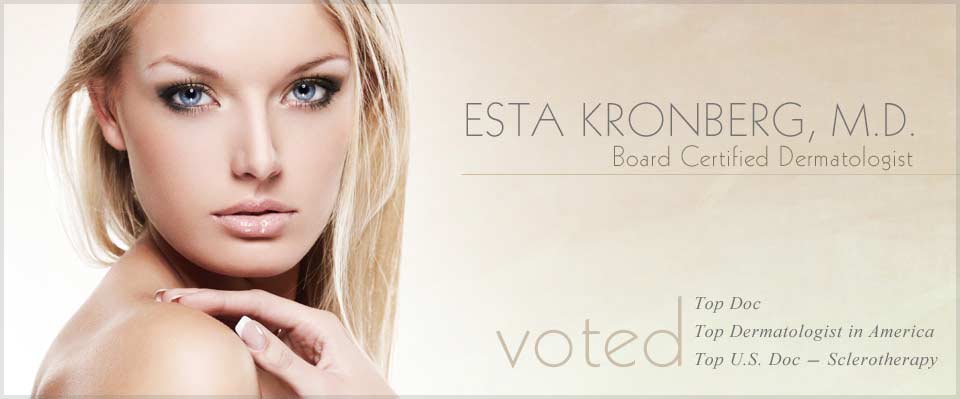 The days of having a “healthy glow,” meaning a medium-dark tan, are over. There are still diehard sun worshippers, but most of us are wary of that big orange disc in the sky. We all know its UV rays are damaging our skin. And since Dr. Kronberg is all about skin, she’s all about protecting that skin from the sun, especially in sunny Houston!
The days of having a “healthy glow,” meaning a medium-dark tan, are over. There are still diehard sun worshippers, but most of us are wary of that big orange disc in the sky. We all know its UV rays are damaging our skin. And since Dr. Kronberg is all about skin, she’s all about protecting that skin from the sun, especially in sunny Houston!
Sunscreens are a given today. We know if we’re out on a boat on the Gulf or out playing 18 at The Woodlands that putting on sunscreen is as important remembering to bring a swimsuit or put that new wedge in our bag.
Sunscreen? Not really
If you’re in your 50s or older, you probably remember the days when sunscreen had not really been invented, or at least not marketed or really all that available. The first true sunscreen was call Glacier Cream and later became Piz Buin (which still makes sunscreen lotions today), and it was developed in 1946 by a Swiss chemist. But when Coppertone (the name says it all) came on the market in the 50s, sunscreen lotion began to grow. Of course, it’s estimated now that the early Glacier Cream and Coppertone products had an SPF of 2! Not much protection there.
Today’s sunscreens have come a long way. Now they’re waterproof (for awhile) with effective SPFs of 50 (it’s been tested and found that any SPF over that doesn’t provide any more protection).
Since Dr. Kronberg loves protecting your skin, here’s a little primer on how your sunscreen blocks the sun from damaging your skin.
Inorganic versus organic
Sunscreens were originally just lotion, although one, PreSun, was a sort of alcohol liquid that was far more liquid than lotion. Now they come in a variety of options: lotions, sprays, gels, or waxes. They are made of a mix of chemicals. Inorganic chemicals in sunscreen can reflect or scatter the light away from the skin. Organic (carbon-based) chemicals can absorb UV rays so that your skin doesn’t.
Some of the early inorganic chemicals included minerals such as zinc oxide and titanium dioxide and they acted as physical sunblocks. To be effective, they had to be covering the skin, hence the white noses of people on the beach in the 80s and 90s. The minerals reflected the sun’s UV rays back off the skin just as white paint reflects light. Today’s inorganic particles are much smaller, so users don’t have to look as if they’re covered with white frosting.
Organic chemicals used in sunscreens have names such as avobenzone and oxybenzone. These chemicals don’t reflect or deflect the UV rays; they absorb them. They do this with chemical bonds. As the bonds absorb UV radiation, the components of the sunscreen slowly break down and release heat. This is why these sunscreens have an effective time limit at which point the user would need to reapply.
SPF
The sun is delivering two types of ultraviolet rays onto your skin, UVA and UVB rays. UVB rays cause sunburns. For a long time, these were the only rays that sunscreens protected against, as their effects were obvious on lobster-red skin. UVB rays affect the epidermis, the skin’s outer layer.
More recently, the effects of UVA rays have come into focus. UVA rays penetrate the epidermis into the dermis, the skin’s second layer. It’s thought that UVA rays damage the skin longer term with premature wrinkling, age spots, and other issues. UVA rays don’t cause sunburn, though, so they’re not as obvious.
A sunscreen’s Sun Protection Factor (SPF) is how you can judge just how much a particular sunscreen is protecting you. It stands for Sun Protection Factor, and it refers to how well the sunscreen protects the user against UVB rays. The formula is this: an SPF of 15 means you can stay out in the sun 15 times longer with sunscreen on than you could without sunscreen before you would start to burn. Obviously, SPF came before UVA rays were understood. Now, any sunscreen worth a thing is labeled “broad spectrum,” and it protects against both UVB and UVA rays.
It’s recommended to use the broad-spectrum sunscreen with SPF between 15 and 50. A sunscreen with SPF 15 protects against about 93 percent of the sun’s UVB rays; SPF 30 blocks 97 percent. No sunscreen provides a 100 percent block.
There’s your Sunscreen 101 class from Dr. Kronberg. When you’re out in the Texas sun, be sure to put on sunscreen. And then remember to have Dr. Kronberg check your skin once yearly for skin cancer. Call us at 713-771-8941 to make your appointment.





No comments yet.